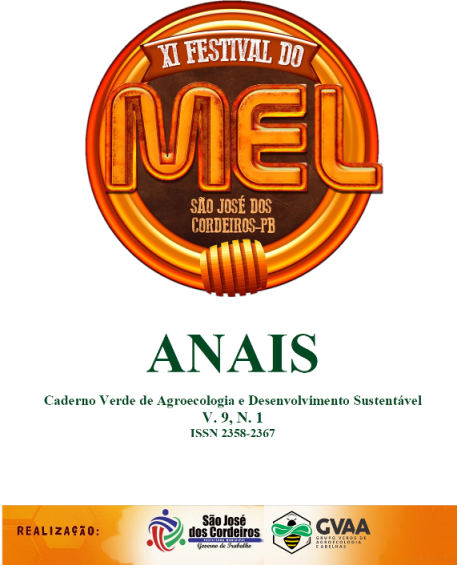MELIPONICULTURA: BENEFÍCIOS A LONGO E CURTO PRAZO
Palavras-chave:
Meliponicultura, Ecossistema, Consciência.Resumo
Este trabalho objetiva-se estabelecer os elementos que constituem a meliponicultura, criação de abelhas nativas que são comumente conhecidas como abelhas sem ferrão. Para tanto, destacar-se, a potencialidade que este tipo de criação apresenta. São vastas as espécies de abelhas pertencentes à tribo Meliponini, sabe-se da importância dessas espécies para a natureza e, portanto, entende-se também que a meliponicultura desempenha valor quanto à produção de vários tipos de mel, além da preservação dessas espécies. Suas diferenciações quanto à apicultura, são também de grande destaque. Sabe-se historicamente que o crescimento da apicultura, fez dela mais comum como produção. No entanto, esse fato tem sofrido mudanças devido às características positivas existentes na criação das melíponas, sendo que, o manejo com as mesmas torna-se um elemento facilitador, assim como, seus recursos são de mais baixos custos financeiros e as áreas de criação são diversas, devido sua praticidade. Além, claro, da produção do mel e derivados. Os desafios fazem partes dos elementos desse modo de criação. A apicultura comercial ainda é predominante, de maior conhecimento que a meliponicultura, essa sustenta as exigências do mercado quanto à quantidade e valor. Muito embora, pode-se dar à falta de informação quanto à qualidade do mel e derivados das abelhas sem ferrão, ou, consequentemente, seu alto custo.. Reconhecer essa atividade pertencente à história da humanidade traz, além de aprendizado, a possibilidade da criação de consciência de que a maneira agressiva do homem lidar com a natureza, além de não dar a si qualidade de vida, modifica o ecossistema de modo que não há como restaurar o que até então foi feito. Todavia, tomar conhecimento de que se pode produzir e preservar é uma saída para se evitar maiores danos.Downloads
Publicado
Como Citar
Edição
Seção
Licença
Termo de cessão de direitos autorias
Esta é uma revista de acesso livre, em que, utiliza o termo de cessão seguindo a lei nº 9.610/1998, que altera, atualiza e consolida a legislação sobre direitos autorais no Brasil.
O(s) autor(es) doravante designado(s) CEDENTE, por meio desta, publica a OBRA no Caderno Verde de Agroecologia e Desenvolvimento Sustentável, representada pelo Grupo Verde de Agroecologia e Abelhas (GVAA), estabelecida na Rua Vicente Alves da Silva, 101, Bairro Petrópolis, Cidade de Pombal, Paraíba, Brasil. Caixa Postal 54 CEP 58840-000 doravante designada CESSIONÁRIA, nas condições descritas a seguir:
O CEDENTE declara que é (são) autor(es) e titular(es) da propriedade dos direitos autorais da OBRA submetida.
O CEDENTE declara que a OBRA não infringe direitos autorais e/ou outros direitos de propriedade de terceiros, que a divulgação de imagens (caso as mesmas existam) foi autorizada e que assume integral responsabilidade moral e/ou patrimonial, pelo seu conteúdo, perante terceiros.
O CEDENTE mantêm os direitos autorais e concedem à revista o direito de divulgação da OBRA, com o trabalho simultaneamente licenciado sob a Licença Creative Commons do tipo atribuição CC-BY.
O CEDENTE têm autorização para distribuição não-exclusiva da versão do trabalho publicada nesta revista.
O CEDENTE têm permissão e são estimulados a publicar e distribuir seu trabalho online (ex.: em repositórios institucionais ou na sua página pessoal) a qualquer ponto antes ou durante o processo editorial, já que isso pode gerar alterações produtivas, bem como aumentar o impacto e a citação do trabalho publicado.








